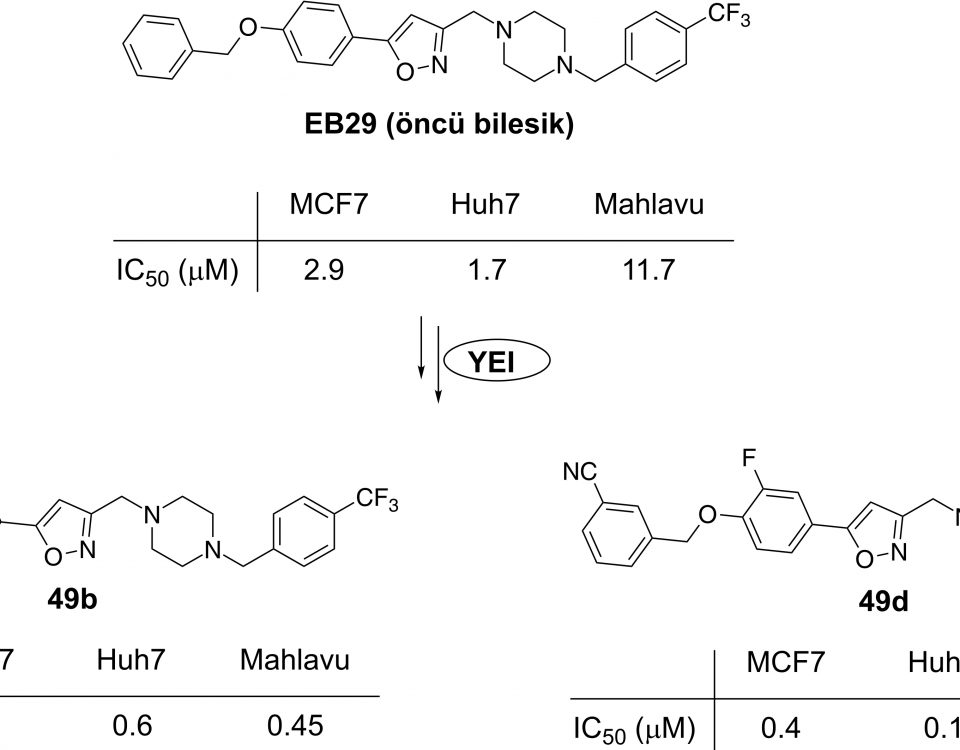
Novel Isoxazole Derivatives as Anticancer Agents against Liver Cancer (TUBITAK PROJECT 214S062)
With the aim of developing novel compounds against hepatocellular carcinoma, 60 new derivatives were synthesized based on the 1-({5-[4-benzyloxy)phenyl]-1,2-oxazol-3-yl}methyl)-4-{[4-(trifluoromethyl)fenil]metil}piperazin (EB29) scaffold. After investigation of the cytotoxic potential of these derivatives against different liver cancer cells, novel more potent derivatives were developed as compared to the lead EB29. The structure-activity relationships (SAR) were investigated by modifying the benzyl, phenyl attached to the 5 position of isoxazole and the amine side chain of the EB29 structure. On the basis of the results, exchanging the 4-trifluoromethylbenzylpiperazine side chain by different amines did not significantly affect the observed anticancer activity. Therefore, this moiety in molecules was not altered for further SAR approaches while concentrating on modifications of the benzyloxyphenyl group. As a result, 3-nitrile-substituted benzyl derivative (29i) demonstrated improved activity against Huh7 and MCF7 cells (IC50=0.1 and 0.8 microM, respectively) while it was less potent against more aggressive cell line, Mahlavu (IC50=10.6 microM). Further SAR studies by substitutions on the middle phenyl group, i.e., 3-fluoro derivative (49d), resulted in a compound with potent anticancer activity against all cell lines (IC50=0.1, 0.38 and 0.5 microM). Moreover, replacement of the benzyl with prenyl (24) or 1,3-dimethylpyrazol-5-ylmethyl (26) also maintained the potency towards all cell lines (IC50=0.3-3.7 microM). Based on the SAR studies, modifications of the benzyl group in EB29 significantly influenced the activity and selectivity of the isoxazole molecules towards liver cancer cell lines. Further molecular biological studies with selected active compounds elucidated that these derivatives induced cell death by interfering with the cell cycle at different phases, increasing the apoptotic cell count in tested cancer cells and effecting the levels of apoptotic proteins within cells. In conclusion, the clinical value of these isoxazole derivatives for further development towards preclinical drug candidates for cancer therapy is warranted.


